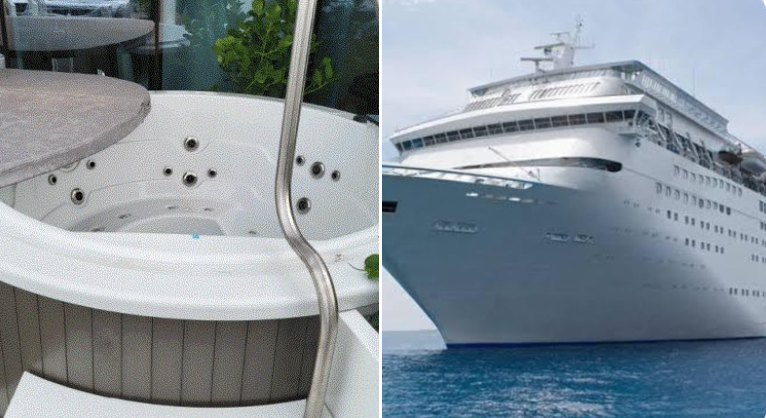CDC Links Cruise Ship Legionnaires Outbreaks to Lapses in Hot Tub Sanitation
CDC findings point to sanitation lapses in private cruise ship hot tubs, raising broader concerns about infection risks and oversight as cruise travel rebounds post-pandemic.

Recent reports from the Centers for Disease Control and Prevention (CDC) have raised concerns over the sanitation standards of private hot tubs on cruise ships. According to multiple studies and investigations spanning 2022 to 2024, these exclusive amenities have been linked to outbreaks of Legionnaires disease, a severe type of pneumonia caused by the Legionella bacteria. These findings underscore both cleaning protocol gaps and the importance of passenger vigilance when using onboard amenities.
CDC Identifies Legionnaires' Disease Outbreaks on Cruise Ships
The CDC connected at least 12 cases of Legionnaires disease to private hot tubs located on the balconies of cruise ship staterooms between November 2022 and June 2024. Ten of those affected passengers required hospitalization. The CDC’s report emphasized that private hot tubs pose a unique risk because they are often subject to less stringent operational and cleaning requirements than their public counterparts.
Environmental, epidemiological, and laboratory evidence contributed to the CDC’s conclusion about bacterial contamination in these tubs, with poor maintenance and improper disinfection identified as key factors. The popularity of private hot tubs among cruise passengers seeking luxury has heightened concerns about their potential to harbor Legionella bacteria.
Expert Insights: Why Private Hot Tubs Pose Risks
Microbiologists and health experts have highlighted the particular risks linked to private stateroom hot tubs. Germ specialist Jason Tetro described them as “three-dimensional petri dishes,” citing the warmth, water, and presence of organic material as conducive to bacterial growth. “Private hot tubs often lack the rigorous cleaning and testing protocols mandated for shared facilities,” Tetro said, “which leaves them more vulnerable to bacterial growth.”
The CDC recommends more frequent testing for Legionella, redesigning hot tub systems to discourage bacterial proliferation, and stricter monitoring of disinfection and pH levels. These steps aim to ensure safer water conditions and reduce the likelihood of further outbreaks.
Norovirus Outbreaks Add to Cruise Ship Challenges
Beyond Legionnaires disease, cruise lines have also been confronting a rising incidence of norovirus outbreaks. Since mid-2024, a new strain known as GII.17 has contributed to roughly 80% of reported gastrointestinal illness cases in the United States, including at least 16 outbreaks on cruise ships in 2025. Public health experts note that norovirus spreads easily in confined spaces, making cruise vessels particularly vulnerable.
These overlapping health issues come at a time when the CDC’s Vessel Sanitation Program, responsible for inspecting cruise ship hygiene, has seen staffing cuts that may affect its capacity. Observers worry that reduced oversight could make it more difficult to ensure passenger safety amid ongoing disease concerns.
How Passengers Can Protect Themselves
The CDC recommends that travelers take proactive measures to minimize their exposure to harmful pathogens. Passengers can use water test strips to check pH and disinfectant levels in private (and public) hot tubs before use. Cruise guests are also advised to ask for information about the most recent health inspection reports and the cleaning schedules for onboard hot tubs.
Cruise lines themselves are encouraged to conduct thorough evaluations of hot tub systems and provide full disclosure about sanitation protocols. Such transparency may help rebuild confidence among health-conscious cruisers who are wary of potential risks.
While cruising remains a popular option for vacationers, the series of disease-related incidents has underscored the need for stronger health safety measures. Cruise operators and public health authorities alike face mounting pressure to address these concerns promptly.
Frequently Asked Questions (FAQs)
What is Legionnaires disease, and how is it contracted?
Legionnaires disease is a severe form of pneumonia caused by Legionella bacteria. People typically contract it by inhaling tiny water droplets containing the bacteria, which can thrive in inadequately maintained water systems such as hot tubs.
Why are private hot tubs riskier than public ones on cruise ships?
Private hot tubs on cruise ships often do not follow the same stringent cleaning and maintenance standards as public facilities. This can make them more susceptible to bacterial contamination if disinfection protocols are not consistently enforced.
How can cruise passengers test hot tub safety?
The CDC advises using water test strips to check both pH levels and disinfectant strength before getting in a hot tub. Passengers can also request up-to-date inspection results and cleaning logs for any onboard facility they plan to use.
What is the role of the CDC’s Vessel Sanitation Program?
The Vessel Sanitation Program is tasked with inspecting cruise ships, enforcing hygiene standards, and investigating outbreaks. However, recent budget cuts to the program have raised concerns about reduced oversight and the potential for increased safety risks.
As the cruise industry grapples with these dual health threats, both travelers and operators are urged to prioritize thorough sanitation practices and regular inspections, aiming to keep ships safer and more enjoyable for everyone on board.




